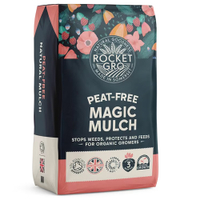Do you know your soil type? Garden experts explain the different types and what each means for your plants
Not knowing what your soil type is could be seriously affecting your plant's ability to grow to their full potential
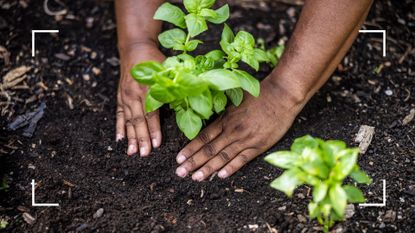

You may be surprised to hear that knowing your soil type is more important than you think when nurturing your garden plants.
Fun and unique garden trends aside, learning your garden's soil type should be at the top of your priority list this season. Whether you want to start vegetable gardening for beginners or wish to plant some of the best plants every garden needs, knowing your soil type is crucial for success.
With six main soil types possible, it's important to know which plants will prosper in your garden's soil conditions and which will not.
So with this in mind, we put it to the gardening experts to unearth the secrets of soil and give their advice on how best to approach the different types.
What is your soil type?
Whether you've noticed your plants aren't thriving as they should be or you're new to growing, understanding your garden's soil type makes the whole process much easier and more successful.
So before you get started on choosing the best rockery plants for your garden, it's time to test your soil and decipher what type you have.
Luckily identifying your garden's soil type is as easy as a simple touch-and-feel test by rubbing it between your fingers.
Sign up for the woman&home newsletter
Sign up to our free daily email for the latest royal and entertainment news, interesting opinion, expert advice on styling and beauty trends, and no-nonsense guides to the health and wellness questions you want answered.
1. Clay soil
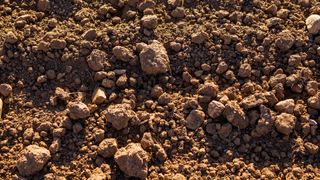
If you're into planting some of the best pollinator plants then you'll be happy to find you have clay soil in your garden.
Sarah Raven, author and professional gardener says, "Clay soil will feel sticky and smooth when wet, easily forming a ball or even a sausage shape without any signs of cracking. Clay can become compacted but tends to be nutrient-rich, retaining water well and draining slowly."
The best plants for this type are persicaria, veronicastrum, virginicum, delavayi, and alchemilla mollis. Sarah explains, "These plants thrive in moisture-retentive soils, handling the dense structure well while also adding bold, brilliant colour that pollinators love."
Whilst this soil type is great at holding onto nutrients, a gardening expert at LBS Horticulture Graham Smith MCIhort, says there are downsides too.
"It drains poorly and is easily compacted, meaning that water and nutrients may struggle to reach plant roots. It can be hard to cultivate, and is prone to cracking if it dries out," he adds.

Since the publication of her first book, The Cutting Garden, Sarah has led the way in introducing a new kind of productive gardening. Her aim is to create intense colour and beauty, combined with a practical and easy-to-achieve approach. Her popular gardening podcast Grow, Cook, Eat, Arrange has achieved 4.1 million downloads. She’s published 15 books and runs Sarahraven.com.
2. Sandy soil
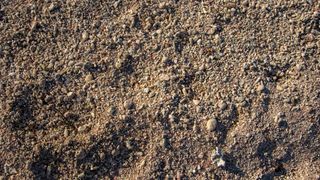
Perhaps one of the easier soils to recognise, Sarah says that sandy soil will feel gritty between your fingers and the grains won't stick together when squeezed.
"It is free-draining and warms up quickly in spring, although sandy soil is usually low in nutrients and moisture," she explains.
If you want to recreate a Mediterranean-inspired garden in your space then this is the perfect soil type for it. Sarah recommends growing erigeron, nepeta x faaseenii, lindheimeri and thyme. These plants are reliable and will enjoy the well-drained conditions as they tolerate drought well.
On the downside, Graham points out that whilst this soil is easy to cultivate and work with due to its lightweight consistency, sandy soil can be more acidic than other soils.

Graham has extensive knowledge in the horticultural and gardening industries, and prides himself on using this to help gardeners of all skills create their perfect outdoor space.
3. Silty soil
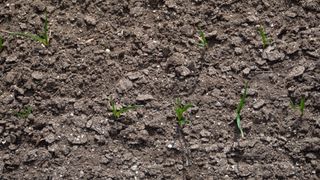
This soil is great for some of the best plants that every garden should have. Graham explains that pure silty soil isn't often found in gardens but it has a soapy, slippery texture.
He says, "Silt soil mainly consists of medium-sized particles, is fertile and well-draining. It holds more moisture than sandy soil, but similarly to clay it can become compacted easily and is prone to erosion."
Whilst this type of soil is rare, Sarah points out that you're most likely to find it in the North West of the UK, near riverside cities like Liverpool and Manchester as this is where fine particles hold moisture well.
"The silty soil found in the North West is ideal for irises, hardy geraniums, and willow trees thanks to its excellent moisture retention and fertility. Peaty soil, being nutrient-rich and acidic, supports acid-loving plants such as rhododendrons, azaleas, and heather," adds Sarah.
4. Loam soil
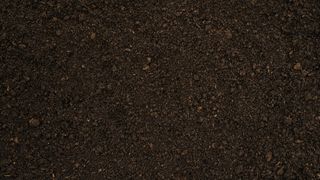
Should be into succession planting and growing your own veggies, loam soil will be the type you'll benefit from having.
Sarah says, "Loam soil has velvety or flour-like texture when dry and will roll into a weak ball shape when wet. Loam is the most desirable soil type for gardens, offering good drainage while also retaining moisture and nutrients particularly well."
She explains that if you're lucky enough to have loamy soil in your garden, it can support a wide range of plants and vegetables.
"You can create both a thriving kitchen garden packed with carrots and tomatoes and perennial borders sporting abundant flowers like delphinium and phlox," adds Sarah.
Disadvantages-wise, Graham says to be careful of the soil's tendency to erode after a while. Otherwise, it really is a fabulous soil!
5. Chalk soil

Found most commonly in South East England, chalky soil contains large lumps and is difficult to mould. Sarah says this type is known for being particularly tricky, and it's the type that is at her personal garden Perch Hill.
"Lavender, philadelphus, verbena, and erysimum tolerate the soil’s alkaline nature and add a full, vibrant look that will be a hit with visiting pollinators too," she says.
Graham also points out that this calcium carbonate-heavy soil may also contain lime, you can confirm this type of soil by placing a small amount of vinegar on it and seeing if it froths.
6. Peat soil
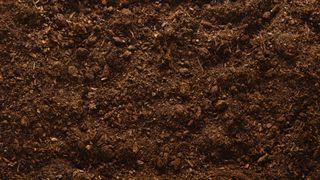
Finally, peat soil is made of organic matter for the majority. Graham explains that thanks to this, peat soil is very fertile and holds a lot of moisture so it's perfect for most plants and great if you often have to worry about looking after your plants whilst on holiday.
Sarah explains that this soil is nutrient-rich, acidic and supports acid-loving plants such as rhododendrons, azaleas and heather.
"Whilst peat soil is rich in organic matter, and can retain water for a long amount of time, it does not drain well, is poor in nutrients and can often be too acidic for many plants," adds Graham.
So ensure whatever plants you're placing in peat soil are happy to grow in an alkaline environment and aren't drought tolerant.
Top Tip: If you want to go a step further and test your soil's pH and treat it accordingly then there are kits available to purchase.
Garden Tutor Soil pH Test Kit: was £13.99 now £12.99 at Amazon
This kit will provide you will accurate soil test results in 60 seconds and it incredibly easy to use again and again. It includes a detailed coloured handbook with lime and sulphur application charts.
FAQs
What's the best soil type to have in your garden?
Whilst you certainly don't get to choose what type of soil you'll naturally have in your garden it is good to know what the best type is and why.
Fiona Jenkins, gardening expert at MyJobQuote, says, "As loam soil contains some clay, sand and silt, it allows rainwater to drain through while still retaining some moisture and nutrients. So, it’s considered the best type of soil to have in your garden."
However, she does point out that it depends on what you want to grow too. She explains that some plants such as alliums, salvias and lavender prefer really well-draining, sandy soils, and others like roses, love rich, heavy clay soils. So each type really does have its own advantages to consider.
Can you change your type of soil?
There's no way to completely change your soil type unless you dig out your entire garden and shovel in a different variety. However, you can improve your soil conditions should you want to plant a species that isn't compatible with the type you've got.
Fiona explains, "By digging in compost and other organic matter, you can change or improve your existing soil."
"For instance, you’d typically add grit along with manure, bark or mulch to clay soil. This helps to reduce clumping and improve drainage and aeration. So, the soil is much easier to work and grow plants in."
RocketGrow Magic Mulch: £9.99 at Crocus
We recommend this peat-free blend. The mixture is 100% sustainable mulch harvested on organic Somerset farms from traditional crops: maize, rye and grass.
Once you've figured out what soil type you have, why not plant some of the best plants for privacy? Of course, you'll need to check they're compatible with your soil type first, but opting for the hardier species will help ensure more growth no matter the conditions.

Emily joined woman&home as a staff writer after finishing her MA in Magazine Journalism from City University in 2023. After writing various health and news content, she now specialises in lifestyle and home writing where she covers all things cleaning, interiors and homeowning.
-
 Kate Garraway spreads Christmas joy with rainbow checkerboard dress and pink heels
Kate Garraway spreads Christmas joy with rainbow checkerboard dress and pink heelsKate Garraway's patterned jumper dress reminded us that fabulous festive outfits can also be so cosy and comfortable
By Emma Shacklock Published
-
 Drew Barrymore says she ‘struggled so much’ mentally with perimenopause, revealing her unexpected symptoms
Drew Barrymore says she ‘struggled so much’ mentally with perimenopause, revealing her unexpected symptomsDrew Barrymore has opened up about the mental toll perimenopause has taken on her, explaining the barrage of symptoms she's been hit with since entering this phase.
By Lucy Wigley Published
-
 Cleaning expert reveals her used tea bag trick for removing grease from pans – just in time for Christmas
Cleaning expert reveals her used tea bag trick for removing grease from pans – just in time for ChristmasIf you're tired of scrubbing away at your pans and removing their non-stick coating, this cleaning hack is just what you need
By Emily Smith Published
-
 Take a walk down memory lane this festive season with the nostalgic Christmas decor trend
Take a walk down memory lane this festive season with the nostalgic Christmas decor trendThis Christmas is all about welcoming back the festive decorations of Christmas past
By Emily Smith Published
-
 Stacey Dooley's extravagantly colourful Christmas tree is proving divisive – but I'm on team 'love it'
Stacey Dooley's extravagantly colourful Christmas tree is proving divisive – but I'm on team 'love it'The presenter's statement tree is sure to be a maximalist's dream and a minimalist's nightmare
By Emily Smith Published
-
 7 Christmas plants that are toxic to pets: experts warn against bringing them into your home for the holidays
7 Christmas plants that are toxic to pets: experts warn against bringing them into your home for the holidaysYou may want to rethink the placement of your fresh Christmas decorations because many common Christmas plants are poisonous to pets
By Emily Smith Published
-
 Emma Willis' festive porch channels 'gorgeous grotto' in the most magical way with foliage and shimmering lights
Emma Willis' festive porch channels 'gorgeous grotto' in the most magical way with foliage and shimmering lightsEmma's decked out doorway has got us ready to take our porches to the next level this December
By Caitlin Elliott Published
-
 I never usually buy festive bedding, but Dunelm just convinced me with this joyful fairisle design
I never usually buy festive bedding, but Dunelm just convinced me with this joyful fairisle designAnd it's only £16!
By Kerrie Hughes Last updated
-
 Kelly Hoppen's 'quiet luxury' monochrome Christmas decor is a perfect example of understated elegance
Kelly Hoppen's 'quiet luxury' monochrome Christmas decor is a perfect example of understated eleganceThis year's Christmas decorating scheme is a masterclass in how to dress your home like an interior designer
By Tamara Kelly Published
-
 Monty Don shares his advice to stop dahlias from becoming 'blackened tatters' this winter
Monty Don shares his advice to stop dahlias from becoming 'blackened tatters' this winterNow is the time to prepare your dahlia tubers for the winter ahead and Monty is here to offer all the advice you need
By Emily Smith Published

